Today, NHS England published the latest data on key activity and performance measures for April and May of this year. Here we show some of these statistics and how they compare with previous trends.
Urgent care
- In June 2021, total A&E attendances increased to over 2.1 million – the highest number of attendances for any June since records began..
- There were 407,693 emergency admissions via A&E in June 2021 – 21% higher than in June 2020 (when emergency admissions fell during the Covid-19 pandemic) and 2% higher than in June 2019.
- In June 2021, almost one in five people (19%) attending A&E spent more than four hours from arrival to admission, transfer or discharge, the worst performance for any June since records began. Performance against the four hour target has worsened by five percentage points over the past three months.
- 66,619 patients spent more than four hours waiting on a trolley from a decision to admit to admission in June 2021. 1,289 people had a trolley wait of over 12 hours.
- There were 783,050 ambulance incidents in June 2021, 16% higher than in June 2020. Provisional data shows that over 1.8 million calls were made to NHS 111 in June 2021, 27% higher than in June 2020.
For more information, see our A&E waiting times indicator.
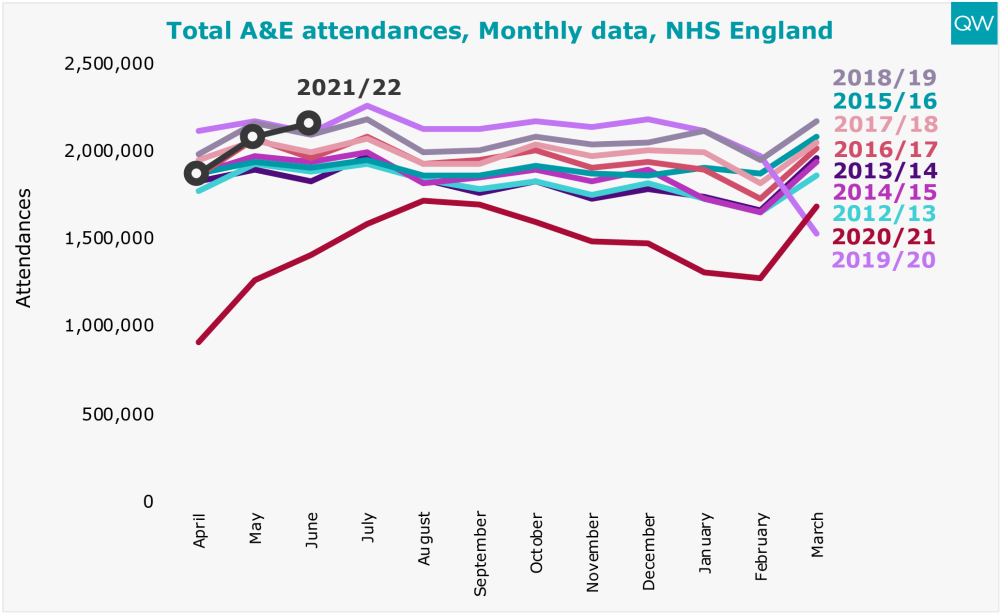
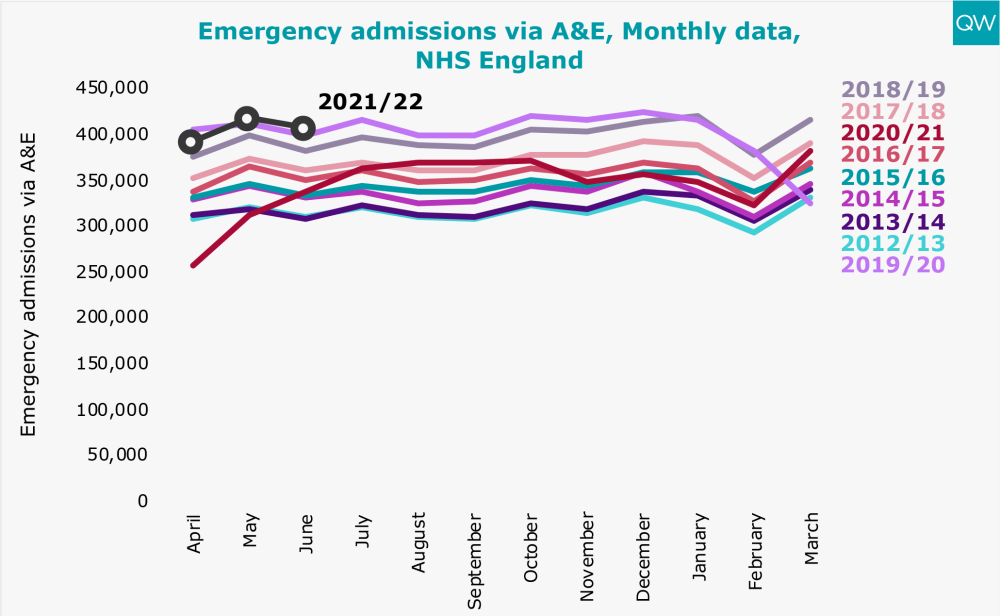
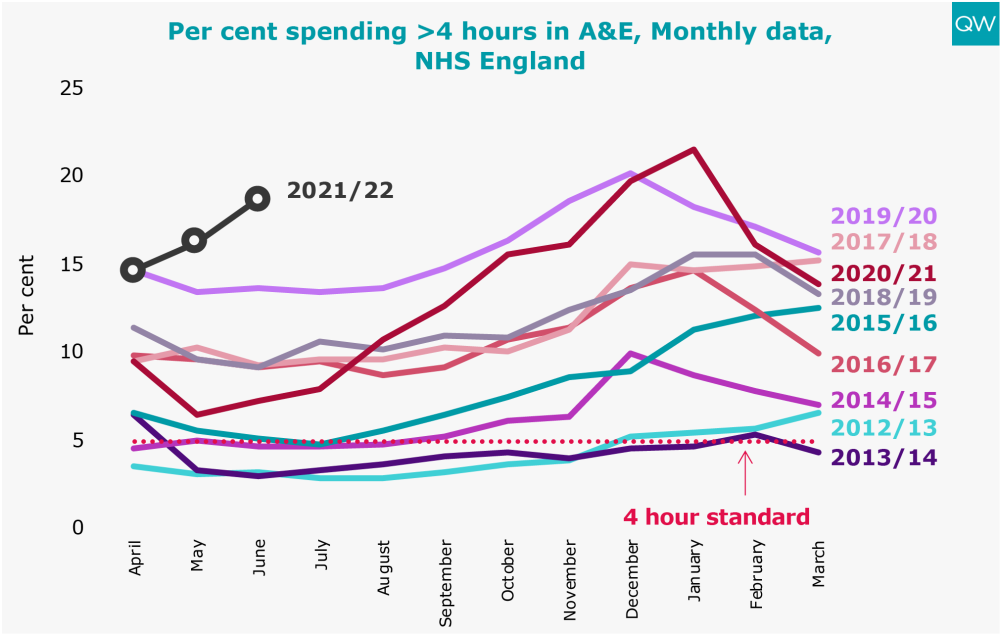

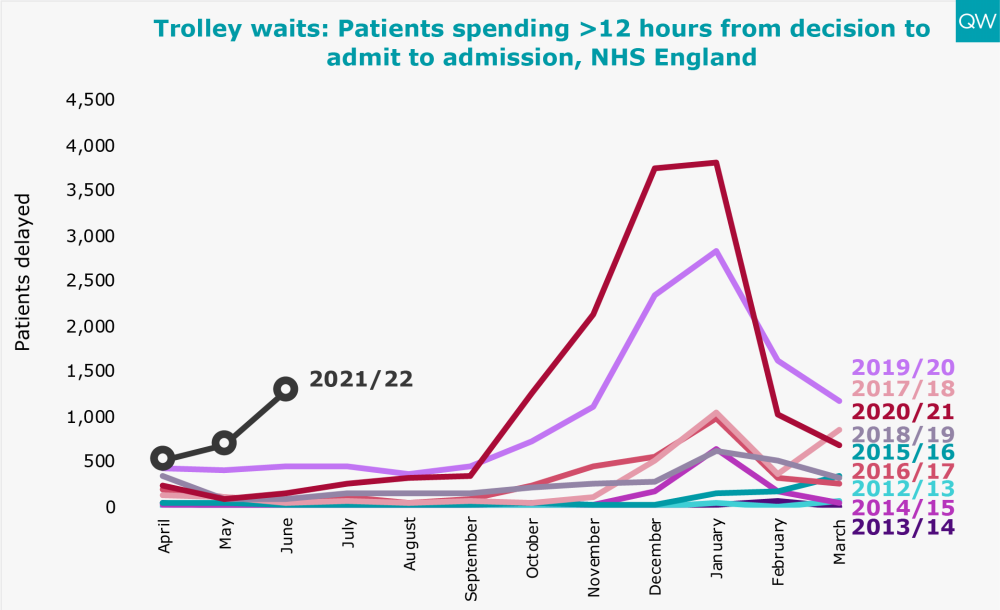
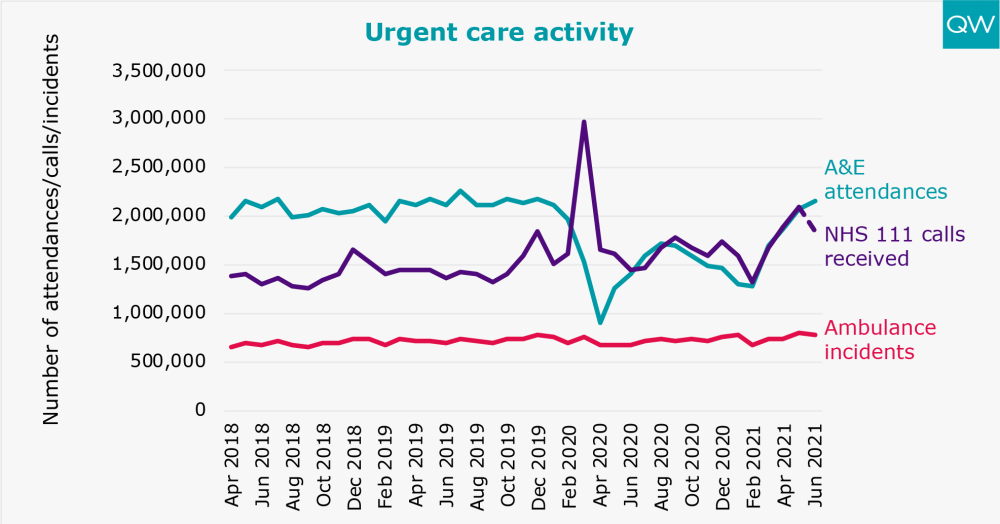
Treatment and diagnostic test activity and waiting times
- The total number of people waiting to start consultant-led elective treatment increased to over 5.3 million in May 2021, the highest level since records began. This follows a previous fall to 3.9 million in May 2020.
- The number of people waiting over 52 weeks to start consultant-led elective treatment fell slightly in May 2021 to 336,733, but remained almost 13 times higher than in May 2020.
- In May 2021, 3,927 people had been waiting over two years to start consultant-led elective treatment. The specialties with the highest number of patients waiting over two years were trauma and orthopaedics, general surgery, and ear, nose and throat.
- 33% of patients had been waiting over 18 weeks to start elective treatment in May 2021, a 5 percentage point improvement compared to May 2020, but still 19 percentage points worse than in May 2019.
- Over one in five patients (22%) had been waiting over six weeks for a diagnostic test in May 2021. The diagnostic waiting time target has not been met for seven and a half years.
- For fifteen common diagnostic tests, including non-obstetric ultrasound, magnetic resonance imaging (MRI), and computed tomography (CT), there were almost 1.9 million tests carried out in May 2021 – two times higher than in May 2020 but 5% lower than in May 2019.
For more information, see our treatment waiting times and diagnostic test waiting times indicators.
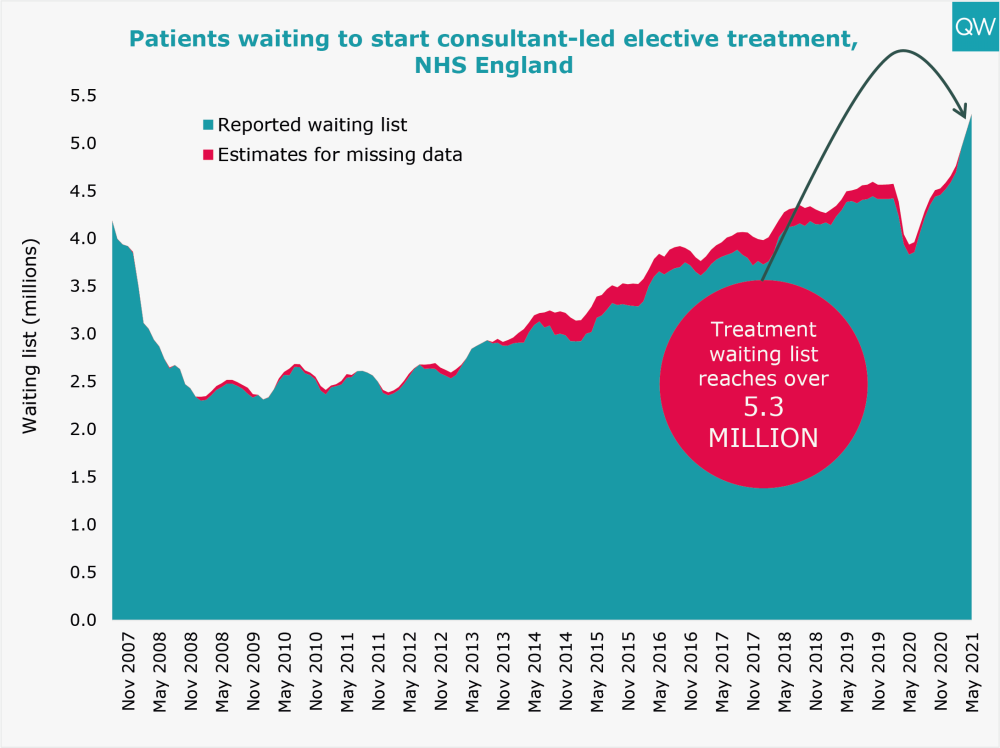
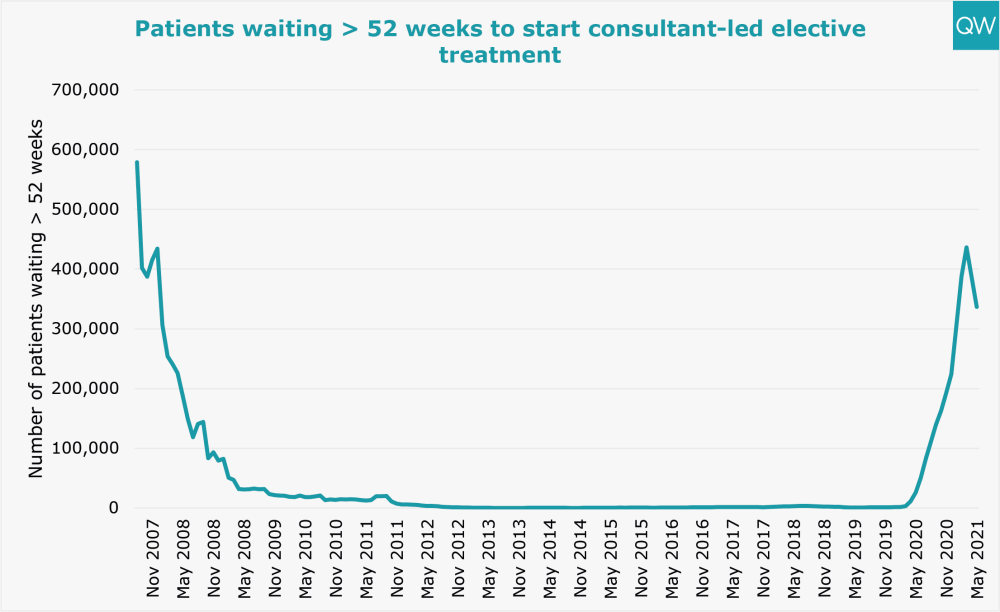
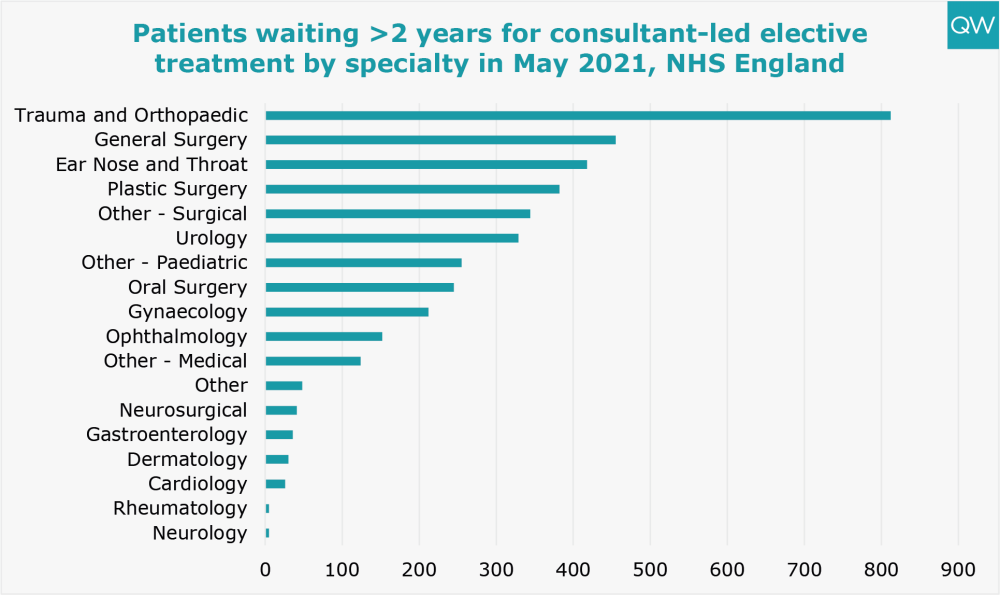
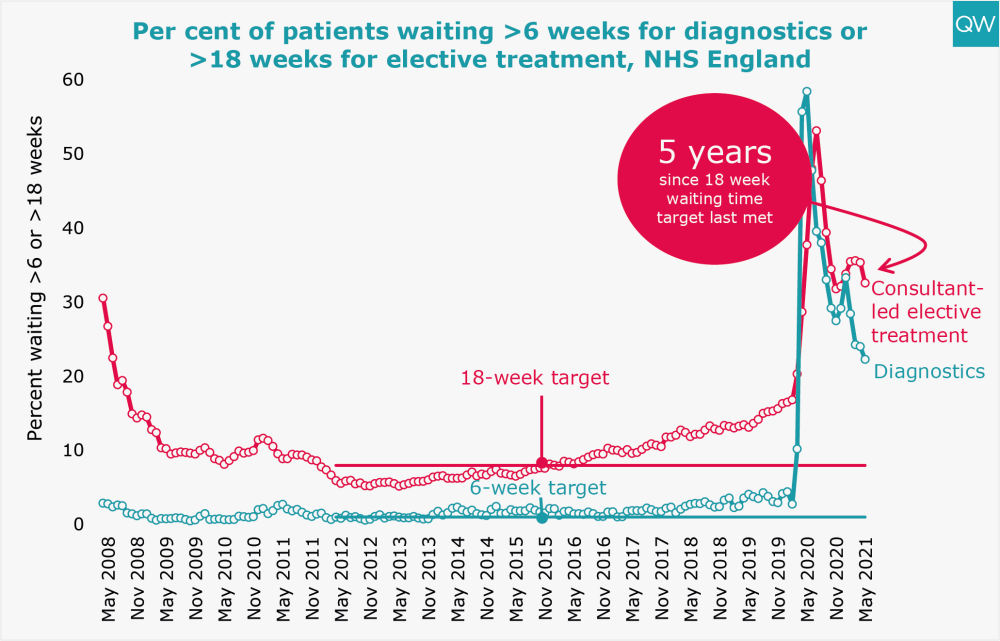
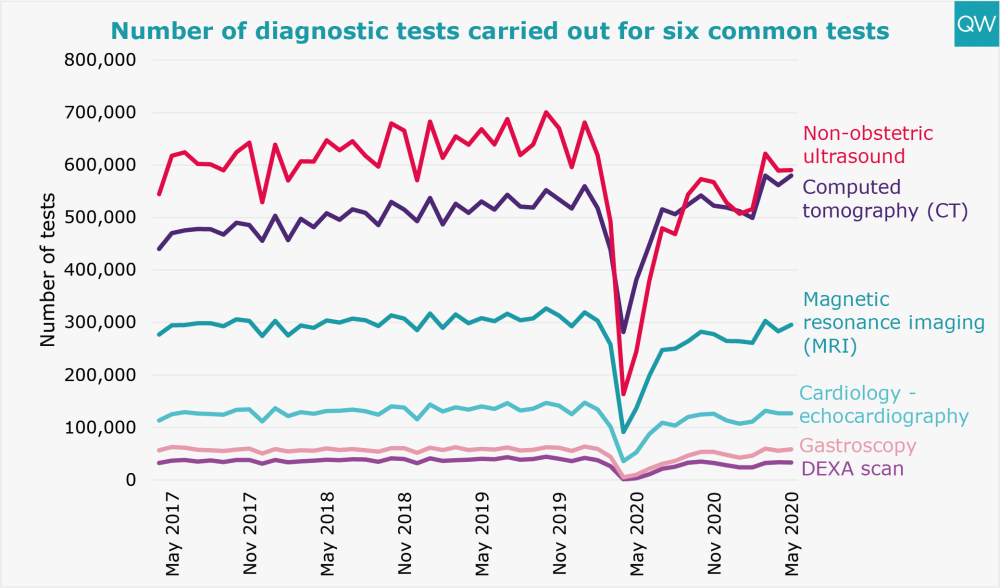
Cancer waiting times
- In May 2021, 27% of patients waited longer than two months to start their first treatment following an urgent GP referral for suspected cancer, a 3 percentage point improvement compared to May 2020, but 5 percentage points worse than in May 2019.
- The 62-day cancers target has not been met for over five years.
For more information, see our cancer waiting time targets indicator.
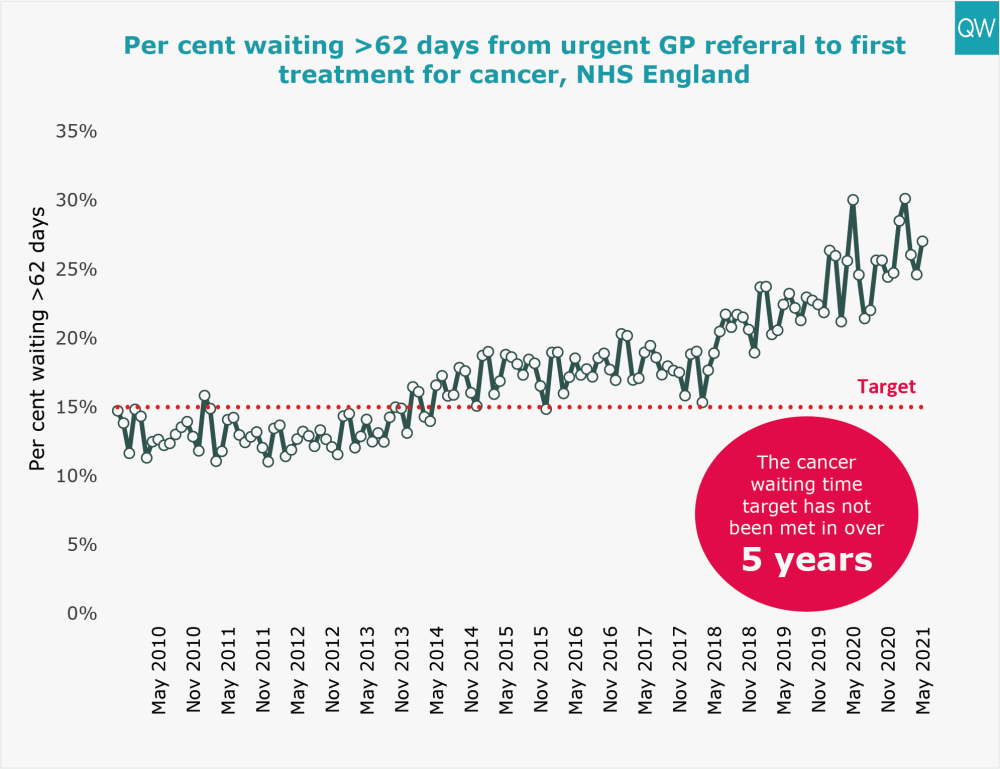
About this data
During this unprecedented time for the health service, QualityWatch continues to provide independent scrutiny of the health and social care system as far as possible. The most recent data published today reflects changes in access and service use as a result of the coronavirus (Covid-19) pandemic. In light of these shifts in activity, we have added new charts and changed the presentation of some of our usual charts, to aid interpretation. It is also worth noting that NHS England have suspended data collection for 2020/21 and Q1 2021/22 for some of their performance statistics, including delayed transfers of care.
In March 2019, the Clinically-Led Review of NHS Access Standards Interim Report was released, proposing some significant changes to many of the targets reported on here. A six-month Progress Report from the NHS Medical Director was also published in October 2019. Field testing of the proposed new standards began in 2019 and NHS England has recently consulted on the recommendations for urgent and emergency care.
For urgent and emergency care, the field test sites have not been submitting four-hour performance data since May 2019. The time series presented here excludes the field testing sites and so is comparable across months and years. For elective care, performance of the field test sites will continue to be included in the national time series, so the data is fully comparable over time.
For interactive charts showing the quality of health and social care over time, please refer to our 200+ indicators.
